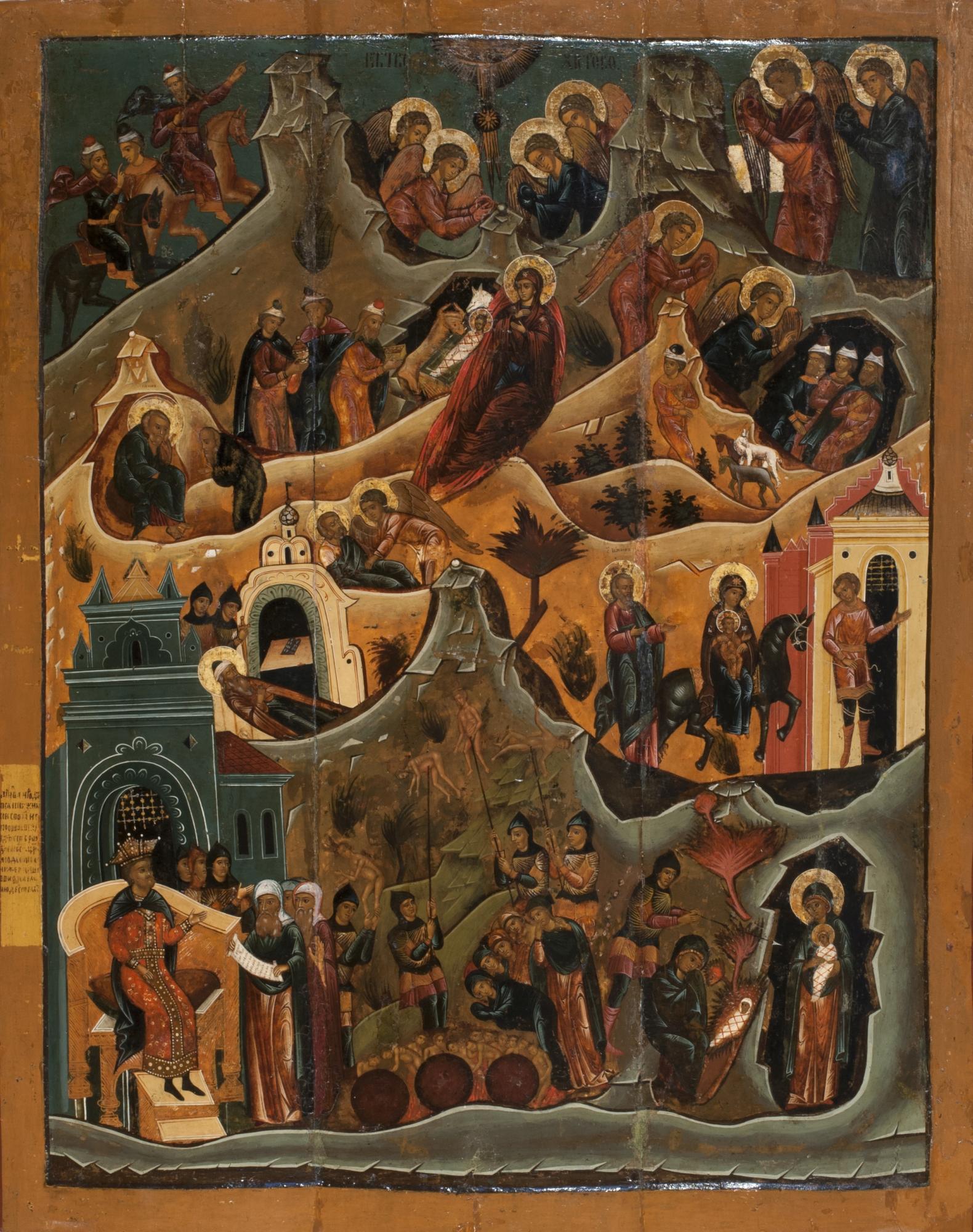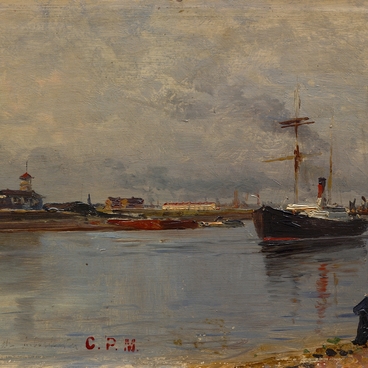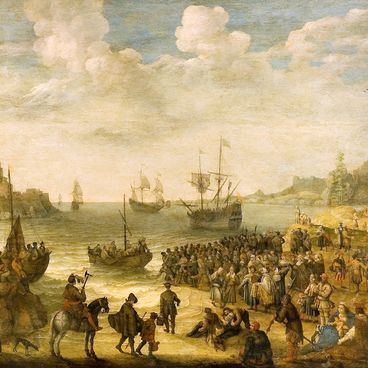The large temple icon the Nativity of Christ came to the Radishchev Museum from Yaroslavl. It has a double dating: the icon was painted in the 17th century, and a century later it was renovated. They called this restoration process renovation of the icon - the destroyed surface of the artifact was not to be restored, but repainted over, or some lost elements were repainted.
The Nativity of Christ
Время создания
17th century
Размер
143x116 cm
Техника
wood, tempera
Коллекция
2
Открыть в приложении#3
Unknown Master
The Nativity of Christ
#2
#4
The Nativity of Christ is one of the main subjects of the Gospel. It is a narrative about the immaculate birth of Jesus Christ near Bethlehem. According to the Scriptures, the Virgin Mary gave birth to the baby in a cave that served as a barn for livestock.
#5
After that, a Star of Bethlehem lit up in the sky and informed everyone of the appearance of the divine baby. Apostle Matthew, author of the first canonical Gospel, wrote:
‘When Jesus was born in Bethlehem of Judea in the days of King Herod, the wise men came to Jerusalem from the east and said, Where is the King of Judea? For we saw His star in the east and came to worship Him’.
#6
The Nativity of Christ has been celebrated from the year 337, when the Pope officially approved the date - December 25. From this time on, the event has been reflected in the visual arts and especially in the iconography. In the Russian tradition the Nativity was depicted in several variations.
#7
On the icon from the Radishchev Museum the author chose a complex, three-part composition. The upper fragment depicts the world of heaven - angels who light the star. Their image became traditional in the 7th - 9th centuries. At first the icon painters painted two or three figures, but later they began to draw a whole legion.
In the center of the icon the painter placed the figure of the Mother of God in red garments. Behind her there is a cave where the manger with the newborn baby is hidden. To the left of the cave there stands Joseph and an elder, whispering something in his ear. He symbolizes the spirit of doubt - the Gospel says that Joseph did not believe in the immaculate conception of the Virgin.
#8
At the bottom of the icon the author placed the earthly world. In the center we see the scene of the Massacre of the Innocents, and above it there is the scene of murder of the prophet Zachariah. In the right corner he depicted the Righteous Elizabeth, a relative of the Virgin Mary and wife of Zachariah. During the massacre of newborns, she together with her son hid in a cave. Her husband refused to say where they were hiding, and was executed for that. Over Elisabeth there is depicted the scene of fleeing of the Christ’s family to Egypt.
#9
For this icon the author chose a complex multi-subject composition including a whole range of episodes. It unites events that took place at different times and in different places, and creates the effect of simultaneous actions. The artist placed the scenes at an equal distance one from another, and placed them on a neutral landscape background. They seem to be attracted to the center of the icon - the Virgin Mary with the baby. She is the common center, she unites the world of heaven and the world of the earth.
#10
A.N. Radishchev Saratov State Museum of Fine Arts
читать дальшескрыть
00:00
00:00
1x
The Nativity of Christ
Время создания
17th century
Размер
143x116 cm
Техника
wood, tempera
Коллекция
2
Открыть в приложении
Поделиться



